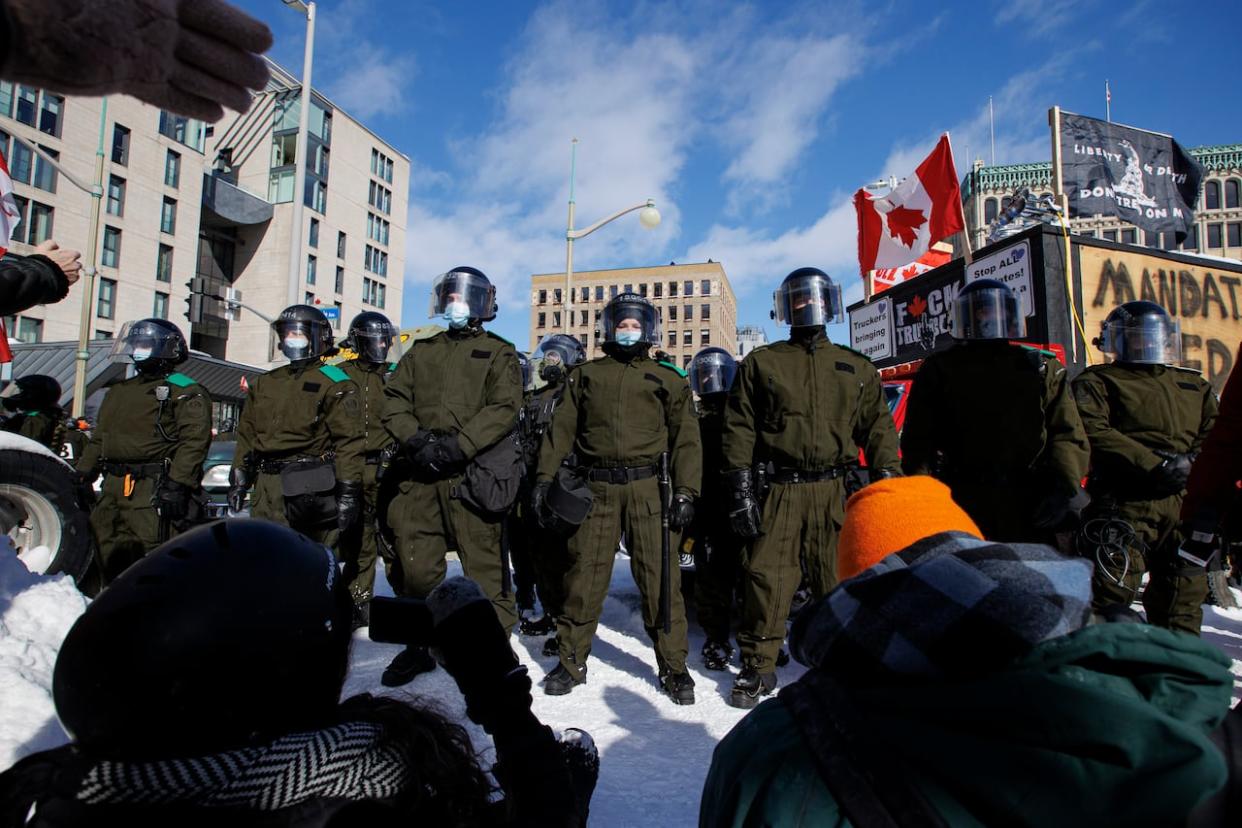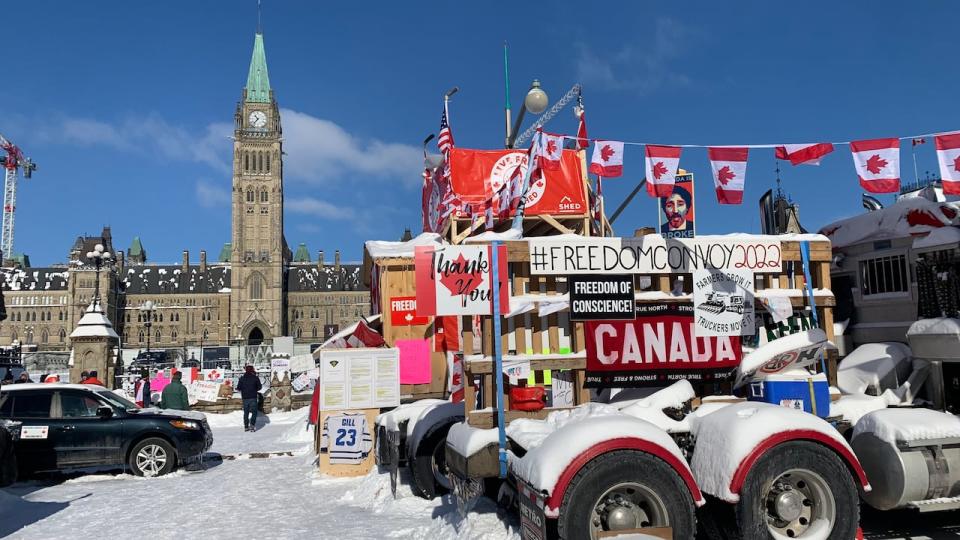Police directed convoy protesters downtown, officer tells trial

Ottawa police directed protesters taking part in what became the Freedom Convoy to the city's downtown core, and had information the truckers could stay for a prolonged period, court heard Wednesday.
Const. Isabelle Cyr is testifying Wednesday in the criminal trial of Tamara Lich and Chris Barber, two convoy organizers who are each charged with mischief, counselling others to commit mischief, intimidation and obstructing police for their role in the weeks-long protest in January and February of 2022.
As a member of the police liaison team, Cyr was tasked with communicating with people involved with the convoy before it arrived and during the protest in Ottawa.
She testified that she understood from communicating with one of the protest organizers that a code of conduct was required for truckers to join the protest, and it had a stipulation against violence.
Cyr also told the court how she raised concerns before the convoy's arrival that it would be difficult to control the protesters because there were different leaders and movements involved in it.
Cyr and other officers sent traffic maps and directions to protesters telling them to go to key downtown arteries and intersections, including Wellington Street, Rideau Street, the Sir George-Étienne Cartier Parkway and what was then known as the Sir John A. MacDonald Parkway.
"I know traffic officers were out instructing protesters where to go," she told the court.
Police communication part of defence case
During cross-examination by Lich's lawyer Lawrence Greenspon, Cyr was shown an email sent three days before the protest's arrival noting the protesters had raised more than $5 million and they could stay in the city for a "prolonged period."
Cyr also told the court it was difficult to know how many different convoys were coming to the city.
On Jan. 27, two days before the bulk of the protesters began arriving, she was provided traffic maps to send to them.
"Great job on the maps ... truckers will love it!" she wrote to her fellow officers.
She testified that during the convoy she was communicating with protesters on a daily basis, and in a few instances where she was able to convince a trucker to move their truck, was told by a superior officer not to allow it.
Earlier in the trial Insp. Russell Lucas, the incident commander managing the convoy's impacts, said he approved a plan to allow more vehicles onto Wellington to shrink that footprint and provide nearby neighbourhoods some relief, while concentrating police enforcement in one location.
But that plan was rejected by then-chief Peter Sloly, Lucas testified, saying he was told by superior officers "we're not giving them one inch."
A text message shown in court, which was sent by one of Cyr's colleagues to other officers, said the lack of authority given to police liaison teams to make decisions during the protest had "resulted in this catastrophic failure" and empowered certain protesters.
The Crown is trying to establish that Lich and Barber had "control and influence" over the crowds and encouraged others to join the protests while also fundraising.
Greenspon argues the protesters were assisted by police.
"They were directed how to get off the highway, what roads to take, where to park in the downtown core of Ottawa and on Wellington Street," Greenspon said outside of court Sept. 20. "They didn't just end up there. They were directed there."
Cyr said by Feb. 17 she was out with other officers handing letters to protesters warning them of pending police action and potential arrests. She said she and other officers were "swarmed" by demonstrators when they tried doing this and "felt unsafe."

Freedom Convoy Demonstration in Ottawa.before police moved in on 20 Feb 2022. See truck and protest signs in front of Parliament buildings. (CBC/Radio-Canada)
Texts, emails show what Cyr told protesters
Text messages between one of the convoy protest organizers and Cyr, filed as part of a different civil case, show how police told protesters where to park in January 2022.
That affidavit also showed a text from Cyr to someone requesting the protesters' itinerary and an email with routes to staging areas apparently set up by Ottawa police on Wellington and the parkway, which would eventually be filled with trucks and other vehicles for weeks.
The document does not include all communication between Cyr and the convoy contact, and it's expected some of Cyr's communications with protesters will become evidence in the criminal trial.
Protesters started arriving in the city on Jan. 28 and by the next day, thousands of people were converging on Parliament Hill accompanied by the constant honking of trucks and train horns. Wellington was clogged with vehicles belonging to protesters prompting several downtown businesses, including the Rideau Centre, to close.


